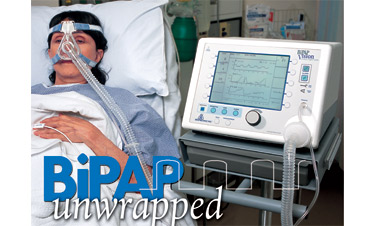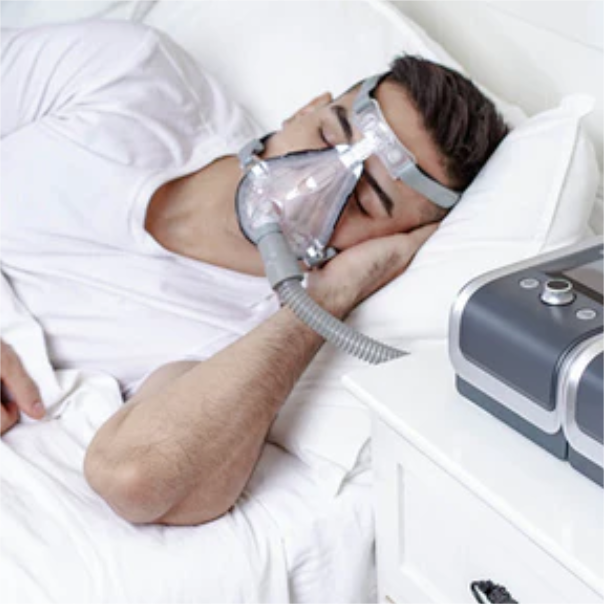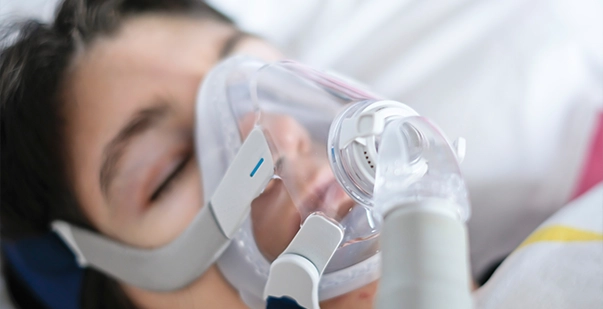Bipap vs. CPAP: Which Is the very best for Your Rest Disorder?
When browsing the complexities of rest conditions, the choice between BiPAP and CPAP treatment is a crucial factor to consider. Each method supplies one-of-a-kind advantages customized to certain conditions, yet the choice depends upon specific client demands and convenience levels. While CPAP provides a steady air movement ideal for obstructive rest apnea, BiPAP's double pressure settings might boost convenience for those with more elaborate respiratory issues. Understanding these differences can dramatically influence therapy efficiency, leaving one to contemplate which alternative genuinely lines up with their health requirements and way of living.
Understanding Rest Disorders
Sleep problems include a range of problems that disrupt regular sleep patterns, affecting both the top quality and period of remainder. These conditions can manifest in different types, including sleeping disorders, sleep apnea, narcolepsy, troubled leg disorder, and parasomnias. Each problem presents unique difficulties, often leading to considerable daytime exhaustion, cognitive disability, and psychological disturbances.
Sleeping disorders is characterized by difficulty falling or remaining asleep, while rest apnea includes duplicated interruptions in breathing during sleep, usually bring about fragmented rest. Narcolepsy, on the other hand, is noted by extreme daytime drowsiness and sudden sleep assaults. Troubled leg syndrome creates uncomfortable feelings in the legs, triggering an irrepressible urge to relocate them, which can also hinder the capability to go to sleep.
The effect of rest conditions expands past private health, affecting general efficiency, connections, and lifestyle. Understanding the particular nature of each condition is critical for efficient medical diagnosis and therapy. As rest wellness comes to be increasingly acknowledged as a crucial element of general wellness, dealing with these conditions is crucial for boosting both rest high quality and day-to-day performance.
Exactly How CPAP Works
Continuous Positive Respiratory Tract Pressure (CPAP) therapy is often employed as a main treatment for obstructive rest apnea (OSA) The device of CPAP entails using a maker that provides a consistent stream of air through a mask worn throughout rest. This air flow maintains favorable stress in the air passage, stopping the collapse or obstruction of the throat that can happen during rest.
When a person takes a breath in, the CPAP device offers a continuous circulation of air, making certain that the respiratory tract stays open - BiPAP Rental. This not only minimizes the signs of OSA, such as snoring and disrupted rest patterns, yet also reduces the affiliated wellness dangers, consisting of cardio issues and daytime fatigue
The stress settings on a CPAP equipment can be personalized to fulfill specific client needs, often identified via a rest study. On the whole, CPAP therapy has actually been revealed to significantly improve the high quality of rest and total wellness for individuals suffering from obstructive sleep apnea.
Exactly How BiPAP Functions
BiPAP, or Bilevel Favorable Respiratory Tract Pressure, is a specific kind of non-invasive ventilation that is specifically useful for people with problems such as intricate rest apnea or respiratory system disorders. Unlike CPAP, which delivers a constant stream of air at a solitary stress, BiPAP offers two unique pressure settings: a higher inspiratory pressure for breathing and a reduced expiratory stress for exhalation. This dual-pressure strategy permits for easier breathing, decreasing the effort needed throughout exhalation.
The gadget operates through a mask fitted over the nose or mouth, connected to a machine that generates atmospheric pressure. When the patient breathes in, the equipment supplies the greater stress to help with air flow, making certain that the respiratory tract continues to be open. Upon exhalation, the machine automatically decreases the pressure, making it much more comfortable for the client to take a breath out.

Secret Distinctions In Between BiPAP and CPAP

In contrast, BiPAP (Bilevel Favorable Respiratory tract Pressure) supplies two various pressure setups: one for breathing and a lower one for exhalation. This twin pressure system enables more comfortable breathing, specifically for clients that fight with exhaling against a continual pressure. BiPAP is usually advised for clients with complex sleep apnea, persistent obstructive pulmonary condition (COPD), or those that call for extra support during rest.
Additionally, the intricacy of BiPAP gadgets usually leads to a higher cost and requires more mindful titration than CPAP. BiPAP Rental. Understanding these essential differences can help in acknowledging which tool might be better for particular sleep disorders, setting the groundwork for informed treatment choices
Selecting the Right Therapy
The decision in between BiPAP and CPAP therapy mainly hinges on the specific characteristics of the rest condition, the individual's general health and wellness, and their comfort with the device. CPAP, which delivers a continual stream of air, is frequently recommended for obstructive sleep apnea (OSA)
Conversely, BiPAP provides two degrees of pressure: one for inhalation and a reduced one for exhalation. This twin stress system is beneficial for patients with complex sleep apnea or those that experience problem exhaling against a continual stress. In addition, BiPAP is commonly recommended for individuals with respiratory system conditions, such as chronic obstructive pulmonary illness (COPD), where differing stress settings can boost comfort and conformity.
Ultimately, a comprehensive assessment by a rest expert, consisting of a rest study, can help figure out which therapy aligns finest with the individual's needs. Aspects such as comfort, simplicity of use, and specific clinical conditions must also be taken right into consideration to enhance therapy end results.
Final Thought
In recap, both BiPAP and CPAP offer distinct her latest blog functions in the monitoring of rest problems. CPAP works for obstructive sleep apnea through constant air flow, while BiPAP uses twin stress setups that enhance comfort for those with complex sleep apnea or breathing problems. The selection between these therapies should be guided by individual needs and problems, requiring a thorough evaluation by a sleep specialist to ensure optimal treatment basics outcomes and boosted top quality of rest.

Generally, CPAP treatment has been shown to considerably boost the quality of sleep and general wellness for people experiencing from obstructive rest apnea.
BiPAP is often recommended for individuals with intricate rest apnea, chronic obstructive pulmonary illness (COPD), or those that call for extra assistance throughout rest.
CPAP is effective for obstructive sleep apnea through regular air movement, while BiPAP offers dual pressure settings that enhance comfort for those with complicated rest apnea or breathing issues.
Comments on “Custom-made Plans Readily Available for BiPAP Rental Solutions”